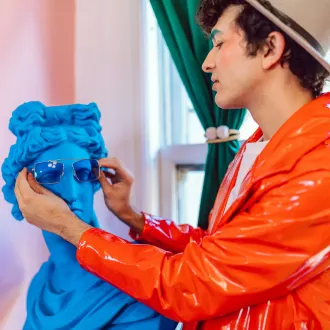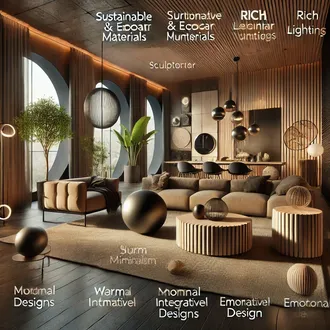Transcription Styles in interior decoration (Ii)
In this presentation we will continue studying the most outstanding features of some of the most popular styles of interior decoration: Ethnic, Nordic, Mediterranean, Industrial and Shabby Chic.
Ethnic Style
The ethnic style groups a variety of styles with their own features, closely linked to their original cultures, such as the Mediterranean, African, Arab, Oriental, Mexican, etc. styles. The ethnic style in essence evokes environments closely linked to the land, to the regional or local culture, full of very varied and handcrafted elements. The ethnic decoration varies depending on the region or culture in which the idea is based, however, there are some elements that help to create the festive and cozy atmosphere of this style, such as:
- Wooden trunks used as seats, side tables or pedestals.
- The plates or handmade vessels used as decorative elements.
- The use of accessories elaborated with natural elements such as wicker, bamboo, jute, etcetera.
- Handcrafted sculptures made of clay, wood or stone, etc.
Nordic Style
Born in the countries of Norway, Sweden, Finland and Denmark in the twentieth century, the Nordic style is based on functionality and minimalist aesthetics, where light, light colors and elements related to nature play the leading roles. Nordic decoration is dominated by natural elements: furniture made of wood where straight shapes are combined with soft curves; cushions, curtains and carpets are made of natural linen, cotton or wool fabrics printed with flowers, stripes or squares.
The Nordic style often uses monochromatic shades of gray, light green and tan on large surfaces, reserving for details on walls or decorative accessories, light colors with shades of pink, blue, lavender, or green.
As for lighting, they harmoniously combine natural lighting, enhanced by the use of clear windows, with artificial lighting, which includes both pendant lamps and floor and table lamps, characterized by their advanced technology and the quality of their designs. Although in the Nordic style they do not use abundant decorative accessories, in their interiors there will always be space for plants, books and some other details.
Mediterranean style
Since the Mediterranean style is very broad and has many variants, in this case we will refer mainly to the style shared by Spain, Italy and Greece; which is basically ethnic, rustic and minimalist, although it has many other features that make it cohesive as a style and distinguish it from the rest.
The Mediterranean style reproduces the tranquility and relaxation of the sea that surrounds it, through constructions with rounded corners; surfaces with bulging projections, typical of its handcrafted construction and white as the predominant color.
To white are added small well-chosen details in blue, beige and sand that color some structural elements -beams, doors and windows- and the few complements included in the Mediterranean style: bed linen, carpets, boat rudders, etcetera.
The Mediterranean style is also characterized by the presence of wooden beams on the ceilings, painted white or blue and mats on the windows to protect from the sun's rays instead of curtains.
Rustic style
The rustic style was born in the 20th century in different regions of the world due to the need to maintain the traditional rural houses of different regions or countries. One of the elements that characterize the rustic style is the simple and rough handcrafted appearance of the furniture and other elements that make up the spaces.
T
interior style 2




